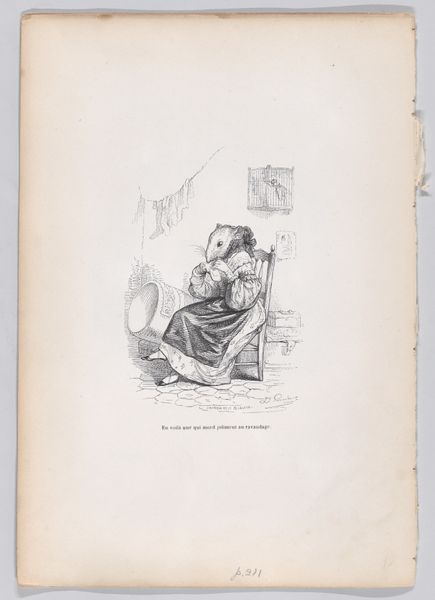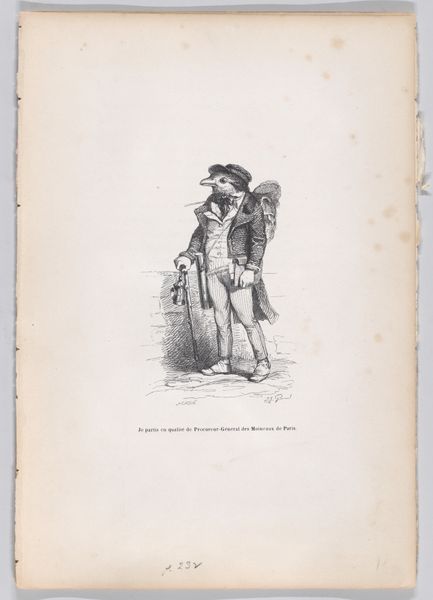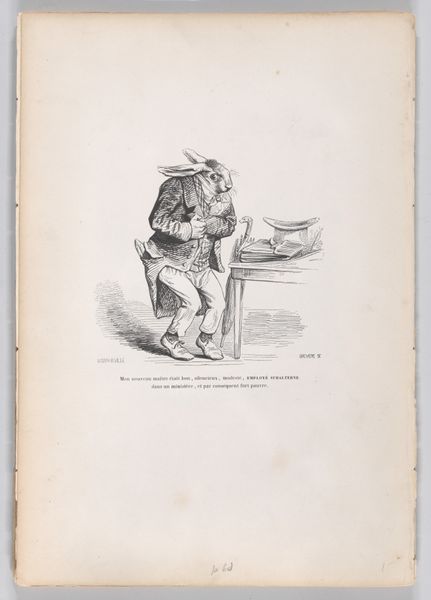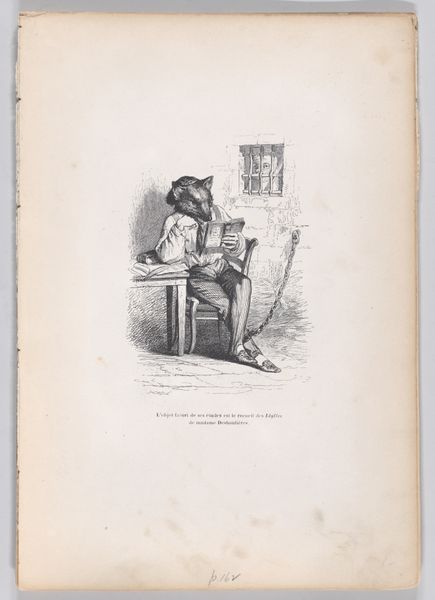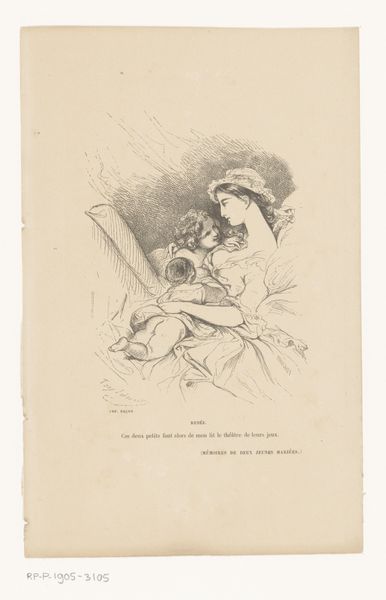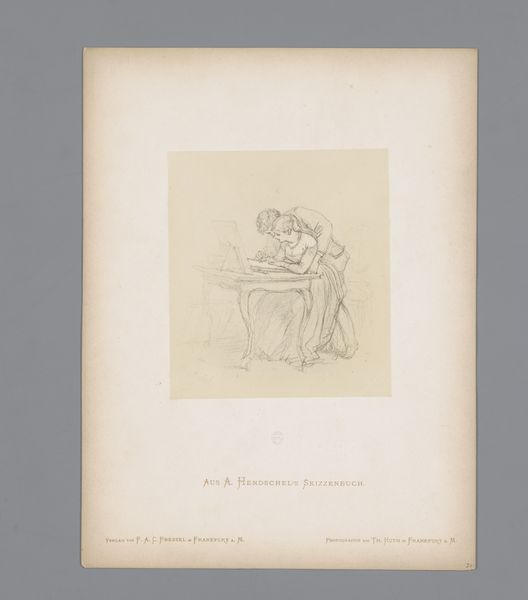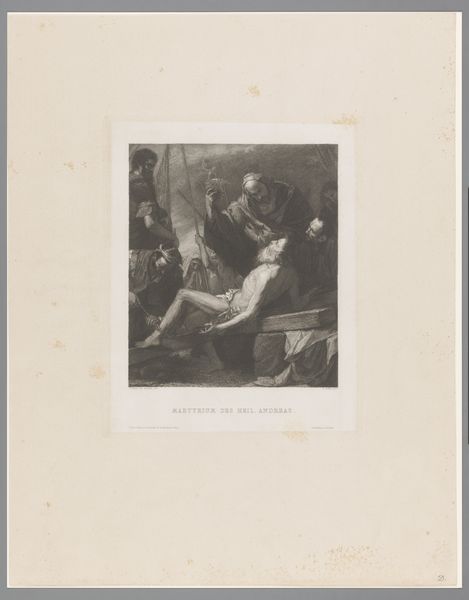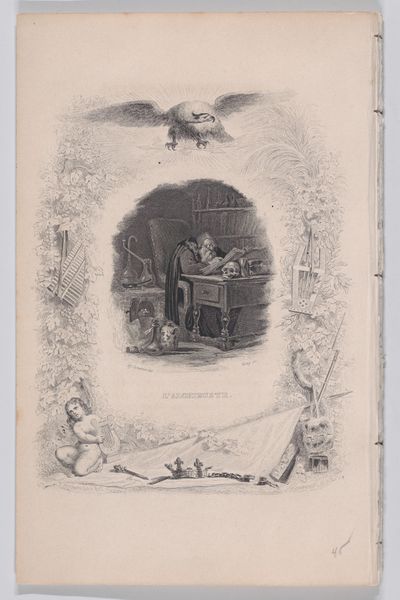
"Here, the civet offers a hit of snuff to an old beaver" from Scenes from the Private and Public Life of Animals 1832 - 1852
0:00
0:00
drawing, print, engraving
#
drawing
#
animal
# print
#
caricature
#
old engraving style
#
genre-painting
#
engraving
Dimensions: Sheet: 10 3/8 × 7 3/16 in. (26.4 × 18.3 cm)
Copyright: Public Domain
Curator: So, here we have a print titled "Here, the civet offers a hit of snuff to an old beaver" by J.J. Grandville, created sometime between 1832 and 1852. It's an engraving. What's your first reaction? Editor: Well, I’m immediately struck by the starkness of the medium. The crisp lines of the engraving lend it a sort of clinical quality. It's a small piece, but incredibly detailed— the cross-hatching must have taken considerable skill. Curator: Absolutely. Grandville's caricatures often satirized bourgeois society by representing people as animals. It was a commentary on human behavior, disguised as humorous animal scenes. And printmaking served a vital public role, widely disseminating these ideas. Editor: It's interesting that you mention the ‘public role’ of printmaking because the choice of engraving enabled a sort of democratization. These images were reproduced en masse, finding their way into newspapers and journals—affordable art with the ability to influence a broader audience. The use of line work to depict varied textures and materials -- from the fur of the animals to the cloth and snuff box, creates visual richness with minimal physical resources. Curator: Precisely! It reflects the rising consumption patterns of the era and points to the social rituals—here, the act of sharing snuff—that bind and define a certain social class. Editor: The material culture is palpable even in a black and white print. It raises questions about labor conditions and production processes inherent in both the physical artwork, and its content, like snuff, that was produced under specific social conditions. Is this satire a form of protest, a championing of material pleasures, or both? Curator: A complicated mix, I suspect. The print allows us to investigate how these sorts of images and their modes of circulation affected public discourse in 19th century. It encouraged a culture of criticism—holding a mirror to society's follies, making sure we remember to question them. Editor: Well, the image does a great deal with relatively simple means, which might itself be a commentary on the power dynamics during this time period in society. Curator: Indeed. The act of turning humans into animals offers an incredibly potent vehicle for socio-political criticism, using mass production to circulate alternative ways of thinking. Editor: I see the work now in a new way, considering the impact that the materials and printing processes had upon social critique and reflection during this era.
Comments
No comments
Be the first to comment and join the conversation on the ultimate creative platform.

